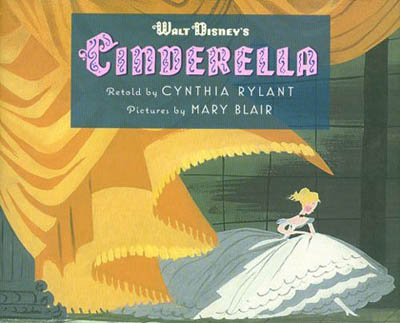
Walt Disney’s Cinderella by Cynthia Rylant, illustrated by Mary Blair
Disney Press; August 2007; 64 pp; $16.99 HC
978-1423104216
Core Audience: Children 4-8; Design lovers of all ages
Strengths: AMAZING original concept art from Mary Blair
Culturally, we are in a new golden age of design right now, with a distinct blurring of the lines between commercial and fine art. It’s everywhere you look: Target’s Design for All project is pulling in designers like Isaac Mizrahi and Michael Graves, Todd Oldham is busting a move for La-Z-Boy, the geniuses at Pixar are re-inventing animation, and even the most humble toilet brush is not immune to its own version of an extreme makeover.
It makes sense then that contemporary artists are looking back to the last golden age of US design, the mid-century. Ground-breaking artists, who until now were largely unsung, are finally getting their props and it’s about time. The vaults are being thrown open, and we’re all reaping the benefits.
One of my all time favorite of these artists is Mary Blair. Incredibly versatile, winsome, and magical, Blair’s use of color and form rivals the great modernists. (I’m not kidding, here.)

During a career than spanned more than half a century, Blair did fine art, illustration, commercial design, murals, and children’s books, but she is best known as one of Walt Disney’s favorite house artists. She did the concept art for more than a dozen Walt Disney projects including The Three Caballeros, Song of the South, The Adventures of Ichabod and Mr. Toad, Peter Pan, Alice in Wonderland, as well as the design for the ubiquitous It’s a Small World attraction which she created at Walt’s behest for the 1964 New York World’s Fair.
Here’s a tiny little taste of some of her work to wet your whistle:

Blair’s work has an irrepressible optimism paired with a sophisticated sense of composition and color that I just love. It’s the pure embodiment of that great Charles Mingus quote: “Anyone can make the simple complicated. Creativity is making the complicated simple.”
***
It used to be that you had to hunt and peck to find examples of her original work for Disney. Most of it was residing in WDAS’s Animation Research Library collection. Now you can have a little bit of this magic on your very own bookshelf!
Disney Press has taken the original concept art for Cinderella (1950) and worked it into a new book with great text by Cynthia Rylant. It has been released with very little fanfare into a market crowded with Cinderellas, but this book is really amazing, and deserves a closer look.*

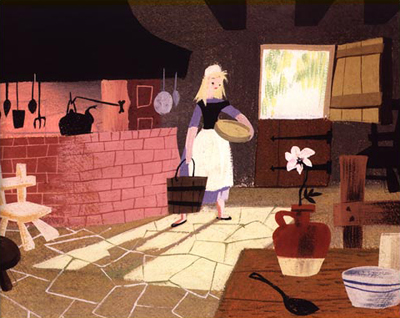




In his book Cartoon Modern: Style and Design in 1950s Animation, Amid Amidi makes the argument that the male-dominated, hard-edged animation department at Disney didn’t quite know what to do with Blair’s dreamy, color-block style, and that’s why she didn’t receive more external recognition during her time there. (She finally did recieve a posthumous nod with a “Disney Legends” award in 1991.) However, anyone who knows the movie will recognize the impact Blair’s art had on the final product. The drama, color, scale, and composition are all hers.
Nearly sixty years later, Blair’s art has lost none of it’s power. Walt Disney loved her work because like him, he felt she was able to tap directly into childhood. Disney Animator Marc Davis recalled, “She brought modern art to Walt in a way that no one else did. He was so excited about her work.”
A whole new generation of readers and design enthusiasts will feel exactly the same.
Rated: 9.5
Order this book from your local independent bookstore
_________
![]()
BONUS: Check out this very cool Mary Blair 1950’s B&W commercial for Meadow Gold Ice Cream.
Many thanks to Fred Cline for making it available. Fred knew Mary and her husband Lee, who encouraged him to study design and animation, and he is doing a great job of carrying the torch.
ALSO: If you are excited by Mary Blair’s work and want to learn more, check out this great retrospective: The Art and Flair of Mary Blair (978-0786853915; Disney Editions; $40.00 HC)
SUPER DOUBLE-BONUS IF YOU LIVE IN SAN FRAN: The Museum of Cartoon Art has an exhibition up by the same name running until March 2008. Lucky!
*Book images: Copyright 2007 Disney Enterprises, Inc. All Rights Reserved








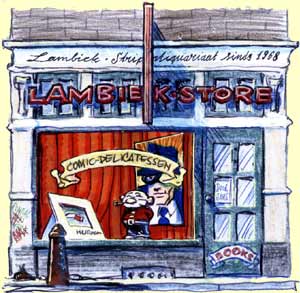





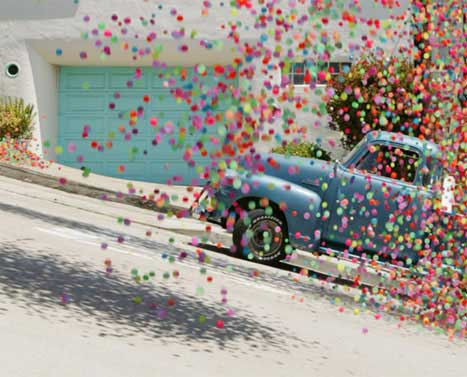



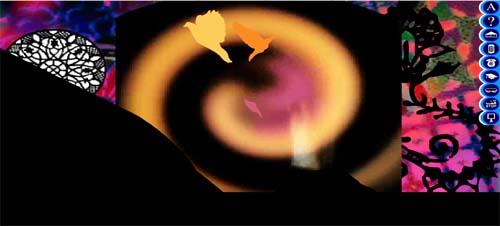


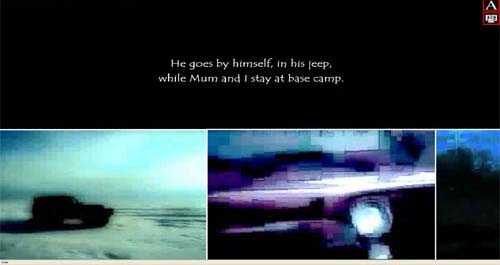
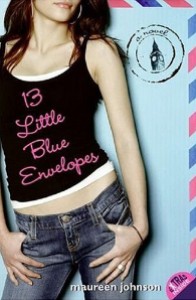

Oh wow. Thanks for this. I had no idea this was out. I’m currently reading Leonard Marcus’ Golden Legacy (about the history of the Golden Books), and there’s quite a bit about Mary Blair in there. Harry Bliss is interviewed by Marcus in one spread about his adoration for her work (he discusses I Can Fly!).